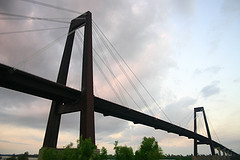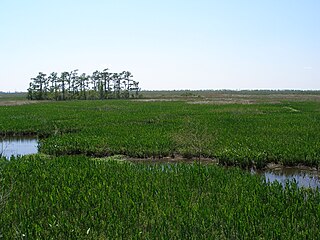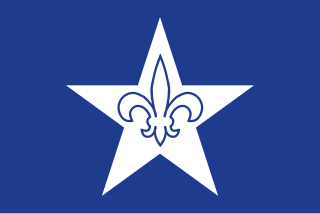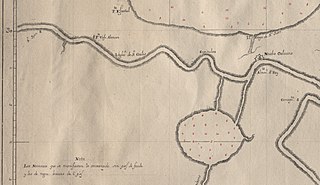Related Research Articles

The Sabine River is a 360-mile (580 km) long river in the Southern U.S. states of Texas and Louisiana, From the 32nd parallel north and downstream, it serves as part of the boundary between the two states and empties into Sabine Lake, an estuary of the Gulf of Mexico.

Jean Lafitte was a French pirate and privateer who operated in the Gulf of Mexico in the early 19th century. He and his older brother Pierre spelled their last name Laffite, but English language documents of the time used "Lafitte". This has become the common spelling in the United States, including places named after him.

Cameron Parish is a parish in the southwest corner of the U.S. state of Louisiana. As of the 2020 census, the population was 5,617. The parish seat is Cameron. Although it is the largest parish by area in Louisiana, it has the second-smallest population in the state, ahead of only Tensas. Cameron Parish is part of the Lake Charles metropolitan statistical area.

Calcasieu Parish is a parish located on the southwestern border of the U.S. state of Louisiana. As of the 2020 census, the population was 216,785. The parish seat is Lake Charles.

Lake Charles is the fifth-most populous city in the U.S. state of Louisiana, and the parish seat of Calcasieu Parish, located on Lake Charles, Prien Lake, and the Calcasieu River. Founded in 1861 in Calcasieu Parish, it is a major industrial, cultural, and educational center in the southwest region of the state. As of the 2020 U.S. census, Lake Charles's population was 84,872.

Lake Arthur is a town in Jefferson Davis Parish, Louisiana, United States. The population was 2,738 at the 2010 census, down from 3,007 at the 2000 census. It is part of the Jennings Micropolitan Statistical Area. The current mayor is Sampson “poncho” Lejeune.

St. Charles Parish is a parish located in the U.S. state of Louisiana. At the 2020 census, its population was 52,549. The parish seat is Hahnville and the most populous community is Luling.

Acadiana, also known as the Cajun Country, is the official name given to the French Louisiana region that has historically contained much of the state's Francophone population.

The Long Expedition was an 1819 attempt to take control of Spanish Texas by filibusters. It was led by James Long and successfully established a small independent government, known as the Republic of Texas. The expedition crumbled later in the year, as Spanish troops drove the invaders out. Long returned to Texas in 1820 and attempted to reestablish his control. In October 1821, Long was defeated by Spanish troops, captured and sent to Mexico City where he was killed by a guard.

Jean Lafitte National Historical Park and Preserve protects the natural and cultural resources of Louisiana's Mississippi River Delta region. It is named after French pirate Jean Lafitte and consists of six separate sites and a park headquarters.

French Americans or Franco-Americans are citizens or nationals of the United States who identify themselves with having full or partial French or French-Canadian heritage, ethnicity and/or ancestral ties. They include French-Canadian Americans, whose experience and identity differ from the broader community.
Sally Miller, born Salomé Müller, was an American woman enslaved sometime in the late 1810s, whose freedom suit in Louisiana was based on her claimed status as a free German immigrant and indentured servant born to non-enslaved parents. The case attracted wide attention and publicity because of the issue of "white" slavery. In Sally Miller v. Louis Belmonti, the Louisiana Supreme Court ruled in her favor, and Miller gained freedom.

The German Coast was a region of early Louisiana settlement located above New Orleans, and on the west bank of the Mississippi River. Specifically, from east to west, in St. Charles, St. John the Baptist, and St. James parishes of present-day Acadiana. It was largely settled by German immigrants and their African slaves and the four settlements of Augsburg, Hoffen, Karlstein, and Marienthal were located along this "coast".
The LeBleu Settlement includes areas extending over both Calcasieu and Jefferson Davis Parishes. It is named after the first residents of present-day Lake Charles, Martin and Dela Lebleu; in 1781 the LeBleus first arrived in Lake Charles and settled six miles east of the city.

The Battle of Congella, beginning 23 May 1842, was between the British of the Cape colony and Voortrekkers or the Boer forces of the Natalia Republic. The Republic of Natalia sought an independent port of entry, free from British control and thus sought to conquer the Port Natal trading settlement which had been settled by mostly British merchants in modern-day KwaZulu-Natal. The battle ended in a British victory due to the heroic ride of Dick King for reinforcements.

The Sager orphans were the children of Henry and Naomi Sager. In April 1844 the Sager family took part in the great westward migration and started their journey along the Oregon Trail. During it, both Henry and Naomi died and left their seven children orphaned. Later adopted by Marcus and Narcissa Whitman, missionaries in what is now Washington, they were orphaned a second time, when both their new parents, as well as brothers John and Francis Sager, were killed during the Whitman massacre in November 1847. About 1860 Catherine, the oldest daughter, wrote a first-hand account of their journey across the plains and their life with the Whitmans. Today it is regarded as one of the most authentic accounts of the American westward migration.
Pierre Lafitte (1770–1821) was a pirate in the Gulf of Mexico and smuggler in the early 19th century. He also ran a blacksmith shop in New Orleans, his legitimate business. Pierre was historically less well known than his younger brother, Jean Lafitte. While not as much of a sailor as Jean, Pierre was the public face of the Lafitte operation, and was known for his wit and charm, in addition to his handling of the sale of smuggled goods.
James Long was an American filibuster who led an unsuccessful expedition to seize control of Spanish Texas between 1819 and 1821.

Jane McKechnie Walton was a Scottish-born Mormon pioneer who helped to settle several Utah towns.
References
- ↑ "CALCASIEU PARISH by John Berton Gremillion". Archived from the original on 2010-06-09. Retrieved 2010-12-24.